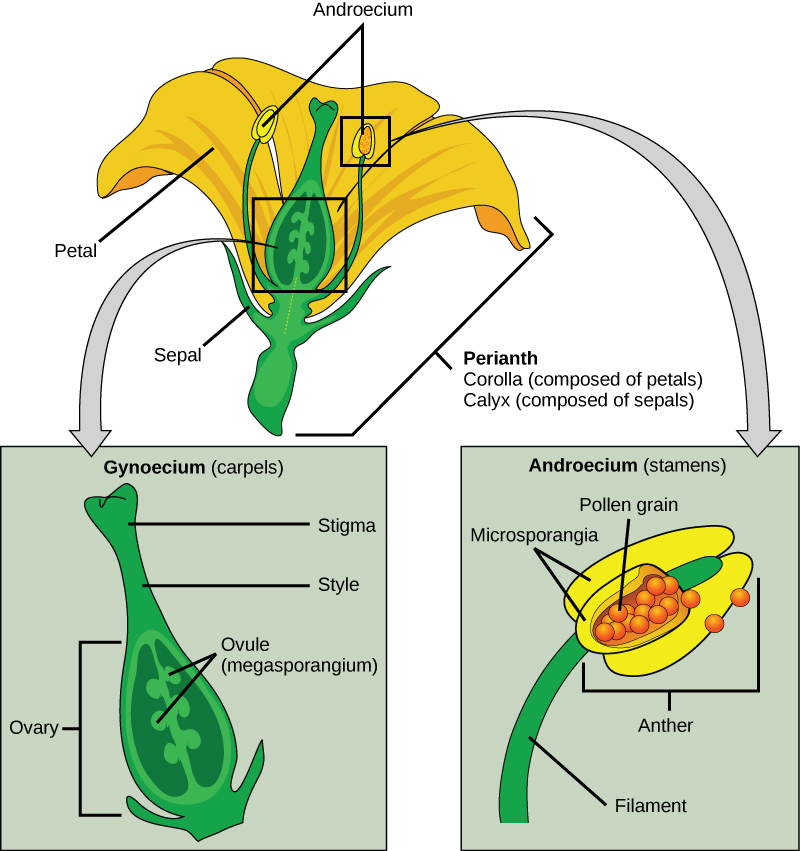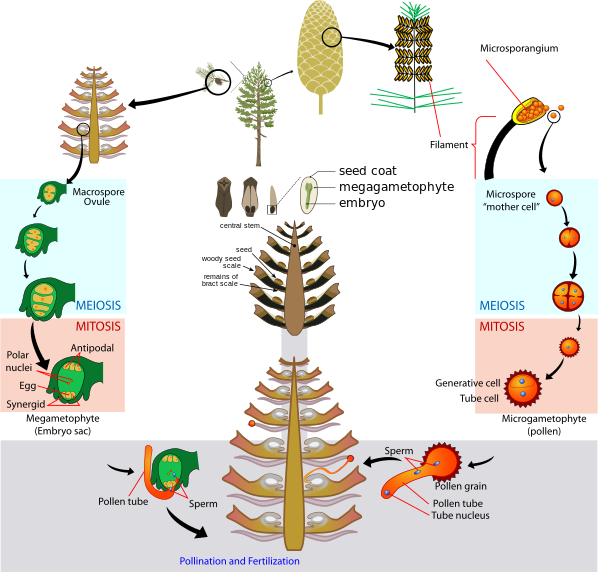

What exactly is pollen?
We know pollen as the yellow coating on outdoor surfaces during springtime, and we know that it causes seasonal allergies for some of us. (See Pollen Allergies | AAFA.org and Fall Fever – The Pipettepen for more on the science behind seasonal allergies.) But what is pollen, and why and how do plants produce it?
Pollen is essential to plant reproduction.
Most plants can engage in asexual or sexual reproduction. Asexual plant reproduction results in the growth of a genetic clone of the parent plant. This can occur in the form of growth from a vegetative portion of the plant (leaf, stem, or root) or in the form of growth from an unfertilized gamete (pollen or ovules). While asexual reproduction can generate more plants more quickly, a lack of genetic diversity can be risky in an ever-changing environment. Sexual plant reproduction occurs when the male and female components of a plant species combine to form a genetically distinct seed. Most flowering plants even have mechanisms by which they minimize self-fertilization, further enhancing the species’ genetic diversity.
Sexual plant reproduction relies on pollination, the process by which the male and female reproductive components of a plant are brought together. Some pollination occurs by wind and other pollination events rely on animals (typically insects) to transport pollen between plants of the same species. Insects that eat nectar may pick up pollen that they subsequently deposit on the next flower they visit.

Depending on the variety of flowering plant, the center of a flower may contain either or both male and female reproductive components. The male part, called the stamen, consists of a stalk called the filament and a pollen-producing anther. The female part, called the pistil, consists of an ovary, a stalk called a style, and a pollen-receiving stigma.
A pollen grain contains one or two reproductive cells and one or two vegetative cells. The reproductive cell produces the plant version of sperm (a non-motile male gamete lacking the flagellum characteristic of animal sperm). When the pollen grain interfaces with the female stigma, the vegetative cell forms a pollen tube that extends down the style and into the ovary, to deposit the male reproductive cell among the female gametes (ovules). The pollen and egg combine to form a seed, which is a plant’s embryonic stage.
Upon contact with the stigma, the pollen grain polarizes and begins to elongate. The tip of the pollen tube has a higher concentration of calcium ions and specialized lipids that help orient the intracellular machinery for tube elongation. In order to extend the pollen tube, cell wall components are delivered to the pollen tube tip, carried in lipid-bound compartments that fuse with the plasma membrane and expand the cell wall.

Though the specific anatomy varies, non-flowering plants have a similar pollination process for sexual reproduction. According to Hopkins Medicine, non-flowering plants (like trees and grasses) are more likely to rely on wind for pollination, so they produce a finer, airborne pollen that is more likely to cause allergies than the waxier pollen produced by flowering plants. While pollen may seem to be a seasonal nuisance, it is an essential part of the plant life cycle, and we rely on these plants for food, oxygen, and other materials.
Peer editor: Molly Parrish